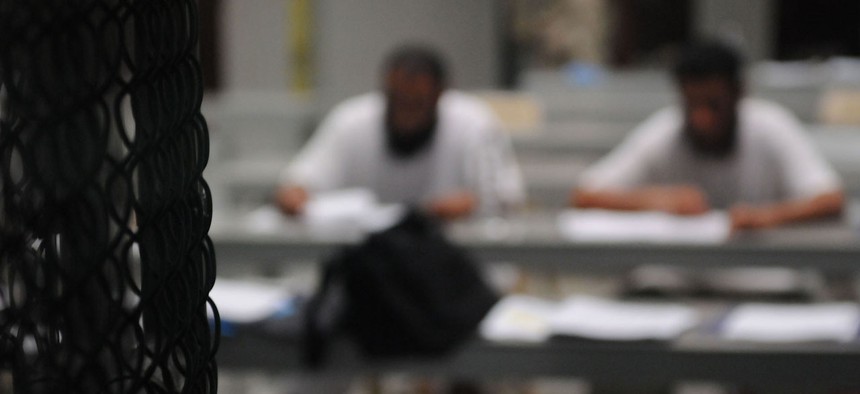Trump Administration Criticized for Misleading Math in Its 'Foreign Terrorists' Report
Trump's list of terrorists also includes run-of-the-mill thieves.
Donald Trump has turned to data to argue for stricter immigration policies. According to a report his administration released Tuesday, more than 70 percent of people convicted of “terrorism-related charges” from 2001 to 2016 were born outside the United States.
“This report is a clear reminder of why we cannot continue to rely on immigration policy based on pre-9/11 thinking that leaves us woefully vulnerable to foreign-born terrorists,” said Homeland Security Secretary Kirstjen Nielsen in a statement.
But Trump’s statistics are misleading. That percentage is based on a list of 549 people, which experts say is flawed. First, the list excludes homegrown extremists, who have become the United States’ biggest terror threat. Second, the vague term “terrorism-related charges” inflates numbers by including not just people who broke laws “directly related to international terrorism,” but others who were convicted of totally unrelated offenses, such as fraud or illegal immigration in the course of a terrorism-related investigation.
“ 'Terrorism-related' is not a term that appears in the U.S. criminal code,” said Alex Nowrasteh, an immigration policy analyst at the Cato Institute. “It’s pretty meaningless.”
His own analysis, which counts foreign-born terrorists convicted of planning or committing a terrorist attack in the United States, found 154 cases from 1975 to 2015. That’s almost 250 fewer than the Trump administration’s count over a longer period of time. The White House and the Homeland Security department did not respond to requests for comment.
Bundling terrorism convictions with those that are merely “terrorism-related” is not new. Attorney general Jeff Sessions, who’s honed in on the issue since he was a senator, had produced a similar report in 2016, and the Justice Department had relied on a similar method long before that. It’s an approach that has been questioned for years, including in a 2003 report by the Government Accountability Office that found the Justice Department had misclassified dozens of cases the previous year.
One example of how this can happen is the case of three Middle-Eastern grocers who were convicted for stealing boxes of Kellogg’s cereal in 2000—but remained on the list of terrorism-related cases because the Federal Bureau of Investigation questioned them after a source inaccurately tipped agents that the three men had tried to buy a rocket-propelled grenade.
The new report didn’t look at any of the violent homegrown extremists because “domestic terrorism was not what was required by the president’s order,” a senior official told reporters. It doesn’t provide any statistic directly linking the numbers in the report to chain migration, or particular visas, either. “It takes some time and research,” he said.
The new report was a follow-up to president Trump’s March 6 executive order on “protecting America from foreign-born terrorism,” better known as the Muslim ban. In it, he asked the departments of Homeland Security and Justice to gather data on “foreign nationals” who have supported and engaged terrorism.
It’s part of a series of information requests about immigrants Trump has made–including regular reports on immigrants’ crimes–which some critics see as part of public relations campaign to promote the president’s anti-immigration campaign. (Trump has also asked for statistics on “honor killings” and other violence against women by foreigners, and on “sanctuary” jurisdictions that don’t honor DHS requests to hold immigrants until immigration authorities can collect them.)
But Nowrasteh, from the Cato Institute, found the report surprisingly thin given the time and resources the government had since Trump commissioned it last March. His study, published in 2016, includes the type of visa the convicted terrorists used to enter the country. “There’s very little new information in this report,” he said. “They have no excuse.”



